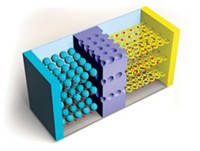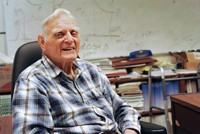Advertisement
Grab your lab coat. Let's get started
Welcome!
Welcome!
Create an account below to get 6 C&EN articles per month, receive newsletters and more - all free.
It seems this is your first time logging in online. Please enter the following information to continue.
As an ACS member you automatically get access to this site. All we need is few more details to create your reading experience.
Not you? Sign in with a different account.
Not you? Sign in with a different account.
ERROR 1
ERROR 1
ERROR 2
ERROR 2
ERROR 2
ERROR 2
ERROR 2
Password and Confirm password must match.
If you have an ACS member number, please enter it here so we can link this account to your membership. (optional)
ERROR 2
ACS values your privacy. By submitting your information, you are gaining access to C&EN and subscribing to our weekly newsletter. We use the information you provide to make your reading experience better, and we will never sell your data to third party members.
Materials
Goodenough wins 2017 Welch Award
Texas researcher recognized for pioneering work in lithium-ion batteries
by Mitch Jacoby
September 13, 2017
| A version of this story appeared in
Volume 95, Issue 37
At an age when most people have long stopped working, John B. Goodenough, 95, is still going strong. Goodenough, who holds the Virginia H. Cockrell Centennial Chair in Engineering at the University of Texas, Austin, is recognized worldwide as the inventor of the commercially successful rechargeable lithium-ion battery—the workhorse that powers most portable electronic devices, as well as electric automobiles.
For his “contributions to chemistry and humankind,” the battery pioneer will receive the 2017 Robert A. Welch Award in Chemistry and $500,000 in prize money.
Through research conducted in the late 1970s and early 1980s, Goodenough demonstrated that lithium cobalt oxide could serve as the cathode in a long-lived rechargeable battery that packed a lot of energy into a small, lightweight package. Coupled with a lithium-intercalated graphite anode, Goodenough’s battery was a hit with manufacturers of portable electronic devices.
The Texas researcher continues to investigate battery materials, probing their structures and electronic properties, in addition to the electrochemical and solid-state chemical reactions they undergo.
Earlier this year, for example, Goodenough and coworkers reported that encasing the ceramic electrolyte layer in a sodium-ion battery with a thin polymer film impeded unwanted, dangerous electrochemical reactions. The hazards associated with those reactions have slowed development of rechargeable sodium-ion batteries, which could offer a less expensive alternative to lithium-ion batteries.
“There’s no more fitting candidate for this award,” says Clare P. Grey a rechargeable battery specialist at the University of Cambridge.
Grey, who took courses taught by Goodenough when she was an undergraduate at the University of Oxford, notes that Goodenough “inspired so many disparate fields” with his seminal work on fuel-cell materials, magnetism, and giant and colossal magnetoresistance.
Goodenough’s book, “Magnetism and the Chemical Bond,” written in 1961, remains a classic on magnetic interactions in transition metal oxides, Grey says. It is still an important textbook for researchers working on electronic and magnetic properties of materials.
Grey adds, “John has been an inspiration to all of us.”





Join the conversation
Contact the reporter
Submit a Letter to the Editor for publication
Engage with us on Twitter